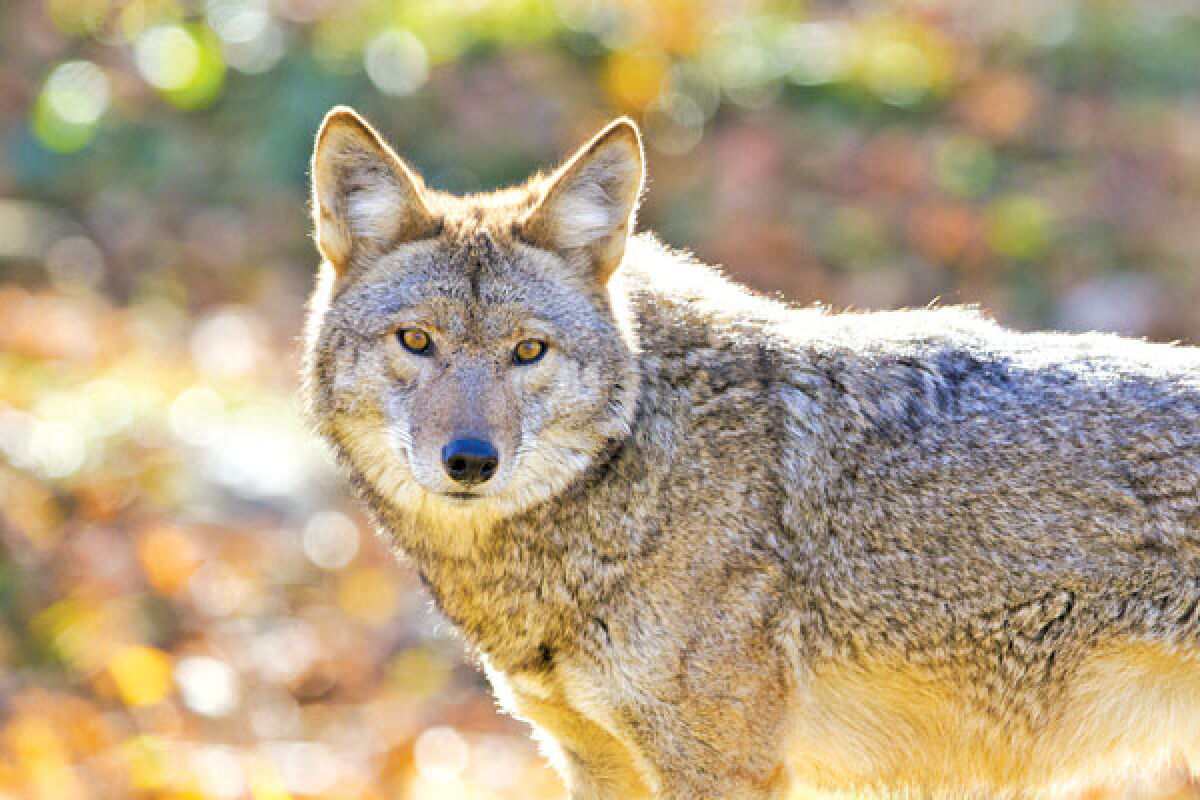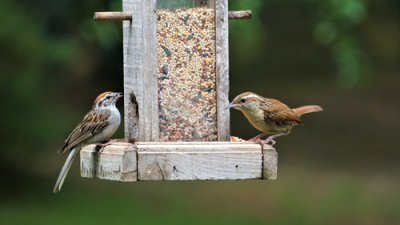METRO DETROIT — It’s 10 p.m. and a howl breaks the calm of an early-summer evening. It doesn’t matter if you are already in bed or up and waiting to see what the night brings as all ears turn to the sound that pierced the darkness.
Whether it comes nestled along a city block or lodged deep into the Michigan wilderness, a coyote’s howl is not an uncommon sound in the night. For some, the thought alone of a coyote lurking about is enough to cause panic. But for as prevalent as the animal’s calls and reputation are around the region, few Michiganders truly understand coyotes for what they are.
“Coyotes are wild canines,” said Cathy Wesley, an instructional guide and naturalist at the Johnson Nature Center in Bloomfield Township. “In Michigan, we have three wild canines: foxes, coyotes and wolves, and coyotes are kind of the mid-sized of them.”
While coyotes are essentially taken (or loathed by some) for granted as part of Michigan’s wildlife, they were not always residents of the Great Lakes State.
“They were more in the central United States, and they are now in 49 of the 50 states; they are not in Hawaii, they haven’t figured out how to swim to those islands yet, but they have swum to islands off of the coast of Massachusetts and Canada,” Wesley said. “The reason we have coyotes in the Great Lakes is because when the European settlers came in, they got rid of wolves and cougars in the area and also created prime coyote habitat by cutting back forests and creating farm fields.”
Wesley says coyotes are “edge species” animals, preferring to hang around where the forests give way to fields. The mass expansion of farms across the continent created edge conditions beyond where they already occurred, giving coyotes favorable territory to expand along.
The mass expansion led to behavioral changes in coyotes. Once pack animals that operated by day, coyotes have since become a primarily nocturnal species that live and hunt either alone or together as a family unit. This and coyotes’ territorial nature are reasons why they have been able to spread so far across the continent. It also explains their howling.
“When you hear coyotes howling, sometimes it’s over territorial disputes and sometimes it’s kind of like a check-in to see how many coyotes are in the area,” Wesley said.
As one of Michigan’s wild dog species, coyotes play a large role in managing the population of various groups of animals.
“In southeast Michigan’s ecosystem, coyotes actually play an important role because over 40% of their diet consists of rodents,” Wesley said. “They keep the rodent population down and they also help keep the Canada geese population down because they’ll eat Canada geese. And then about 20% of their diet is fawns, so because they will eat fawns they actually keep the deer-car collision rate down. In urban areas, they’ll eat feral cats. When you have a coyote in the area keeping the feral cat population down, it actually increases the songbird population in the area.”
To say human-coyote interactions are common is an understatement. From agricultural settlements aiding their movement to residential areas providing prime habitats for rodents, fawns, cats and other prey, coyotes popping up in neighborhoods is not at all as unexpected as it may seem. This means calls to the Michigan Department of Natural Resources about a neighborhood coyote sighting are more likely to result in a quick lesson about the animal’s behavior than anyone showing up to investigate further.
“It can vary anywhere from low concern to high concern,” said Kaitlyn Barnes, a DNR wildlife biologist. “If we’re hearing reports of coyotes that (are) acting normally or we’re hearing it’s healthy and it’s behaving in a normal way that a coyote should, there would not be any intervention at that point from the DNR. If we’re starting to hear about a coyote that’s approaching people, that’s lost its fear of humans, is potentially acting aggressively or maybe growling or barking when its being hazed instead of running away, that it’s following or stalking children or taken pets, then that’s a much higher concern and we would probably initiate some sort of removal either by us or through USDA Wildlife Services or a nuisance wildlife contractor, depending on the situation. Often intervention comes down to if it’s not acting sick or aggressive in any way, we’re usually trying to figure out why it’s causing an issue and it’s usually linked to food.”
Food — be it rodents or cats or fawns or dogs — is usually around for a reason. Keeping garbage tidy keeps rodents attracted to trash away, while hazing in the form of unpleasant sounds or odors keep fawns and coyotes themselves away. Pets should be supervised when outside, preventing cats from becoming feral and all pets from potentially becoming an easy meal. Food sources like bird feeders can attract rodents and other animals, creating another way for coyotes to become attracted to a particular property.
While coyotes have not always been in Michigan, they have made the state their home. As long as there’s space and food for them, coyotes will remain part of the state’s ecosystem — and they are well equipped to keep it that way. Coyote populations remain stable not only through their territorial and solo nature keeping them spread apart, but also by making up for numbers lost due to hunting through increased breeding.
“If we were to hunt coyotes in the area, it would actually have the reverse effect of what we could want on it,” Wesley said. “There would actually be more coyotes born the following year.”
Next time there’s howling in the night, take a moment to listen. It may just be a coyote trying to figure out who else is in the neighborhood.
 Publication select ▼
Publication select ▼


























